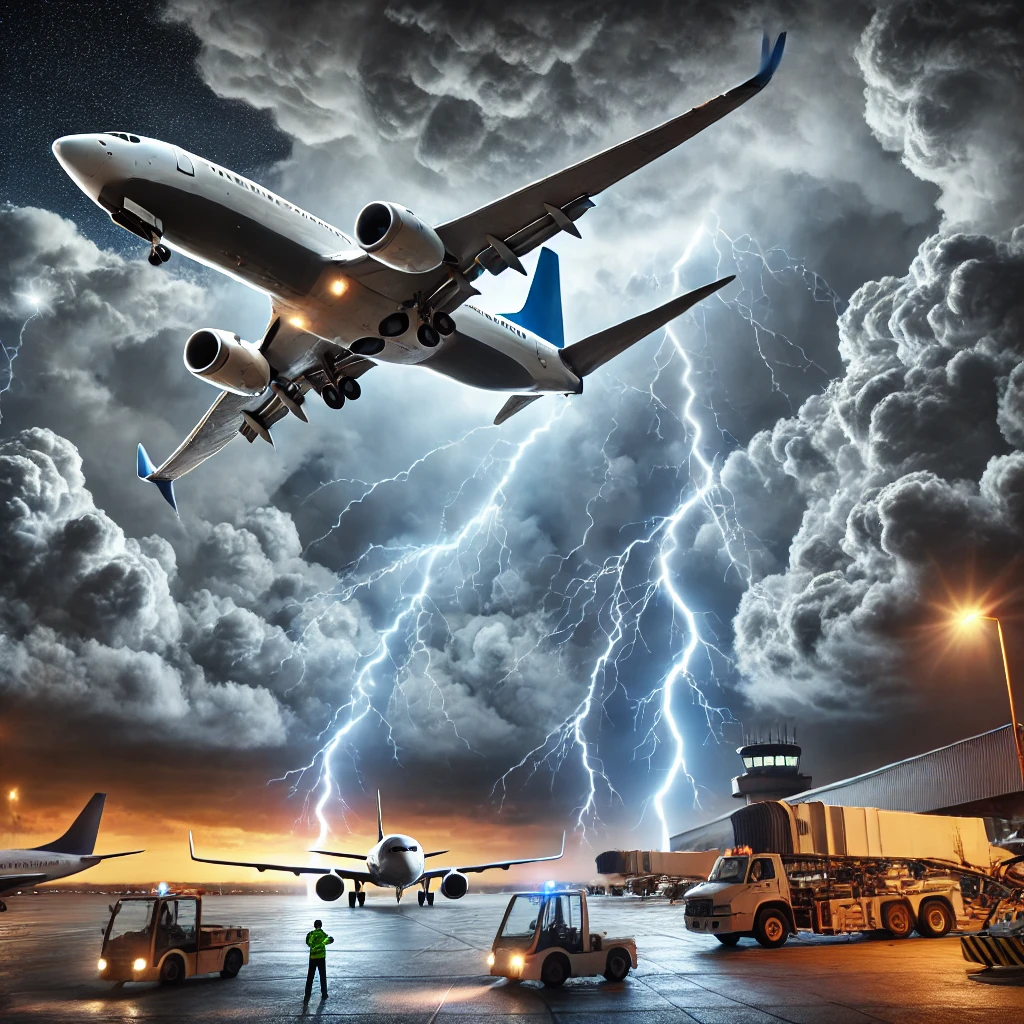We’ve already talked about how lightning strikes, while spectacular, aren’t the major concern for aircraft safety. In fact, when compared to other risks associated with thunderstorms, lightning is probably the least dangerous aspect of flying through stormy skies. So, let’s dive into what really makes thunderstorms a challenge for pilots and why avoiding them is always the best option.
Hailstones: More Than Just a Dent
Flying through hail can cause serious damage to an aircraft. Large hailstones can crack or even shatter windshields, putting the crew at risk and making it impossible to see. While dents and bumps on the fuselage might look alarming, they’re generally less dangerous compared to a compromised windshield. Aircraft skin is designed to be durable, but even small hailstones hitting at high speeds can leave lasting marks. If you’ve ever seen images of planes after a hail encounter, you’ll know they don’t come out unscathed. Hailstones in the air can be much larger than the ones finally reaching the ground.
Extreme Turbulence and Wind Shear: Shaken, Not Stirred
Thunderstorms are notorious for causing extreme turbulence. Wind shears—sudden changes in wind speed or direction—are particularly hazardous. They can cause an aircraft to lose altitude rapidly or even make it difficult to control. In severe cases, turbulence can result in structural damage to the plane. And for passengers? It’s a terrifying experience that throws everything into chaos—especially for those who didn’t have their seat belts fastened. Unsecured objects fly around the cabin, and there’s a real risk of injury. The crew is trained to handle these situations, but it’s never pleasant.
We’re grouping updrafts and downdrafts into this category too. These vertical air currents are another aspect of turbulence, throwing planes up and down unpredictably, which increases the overall instability during the flight. The good news is that modern aircraft are built to withstand a lot—but it’s an experience no one wants to go through.

Icing: When Thunderstorms Get Cold
Inside cumulonimbus clouds—the towering, thunderstorm-producing monsters of the sky—the risk of icing is high, particularly when an aircraft climbs or descends through supercooled water droplets. Severe icing reduces aircraft performance and can block sensors, making it difficult for the crew to get accurate readings. Ice buildup on wings reduces lift, which could result in dangerous situations if not handled properly. We’ll go into more detail on how icing affects aircraft in a separate article on icing.
Microbursts: Nature’s Slingshot
Microbursts are sudden, powerful downdrafts that hit the ground and spread outward, causing a rapid shift in wind direction and speed. They’re particularly dangerous when an aircraft is close to the ground, such as during takeoff or landing. In the worst cases, microbursts can cause a plane to crash because the sudden shift in wind pressure can overwhelm the aircraft’s ability to respond. Luckily, advances in radar and weather detection have made it easier to detect these phenomena, allowing pilots to avoid them when necessary. But when they hit, microbursts often lead to the need for a quick go-around, a vital maneuver we explain in more detail here.
Heavy Rain: A Soaking That Stalls More Than Flights
Although rain itself doesn’t seem like much of a danger, heavy downpours can lead to flash floods on the airport tarmac and runways, causing delays. Water on the runway increases the risk of aquaplaning, where the aircraft’s tires lose contact with the surface, making it difficult to slow down after landing. This might not be the most spectacular of hazards, but it’s a very real concern. Moreover, heavy rain often reduces visibility, further complicating landings and takeoffs.
Weather Radar and Pilot Deviation Requests: Safety Comes First
Modern aircraft are equipped with sophisticated weather radar systems that allow pilots to detect thunderstorms well in advance. When a storm is identified, pilots can request deviations from their planned flight route to avoid the worst of the weather. In these situations, air traffic control (ATC) always accommodates such requests, even if it means bending the usual rules of airspace management. It’s a bit of a role reversal—pilots get priority and ATC works around their needs, ensuring the safest path forward. This cooperation is vital in navigating safely around storm cells, keeping everyone on board as far from danger as possible.
What About Lightning?
We’ve discussed lightning strikes in a previous post, and the consensus is clear: while dramatic, lightning rarely poses a direct threat to aircraft. Modern planes are designed to withstand lightning strikes, which generally pass around the fuselage and exit without causing serious harm. The majority of damage is often superficial, with no risk to the structural integrity of the aircraft. So, while lightning is something pilots avoid, it’s far less dangerous than the other hazards a thunderstorm brings.
Operations Halted for Safety: Protecting Ground Crews from Lightning
Thunderstorms don’t just affect aircraft in the air—they also disrupt operations on the ground. When lightning is detected in the vicinity, airports are often forced to halt outdoor work to protect ground crews. Refueling, loading luggage, cleaning, loading catering and maintenance activities all come to a stop to prevent the risk of a lightning strike. This can lead to delays, not because of the weather in the air, but because safety procedures on the ground need to be followed. As frustrating as it can be for passengers, it’s a necessary precaution to keep everyone safe.
Leave a Reply